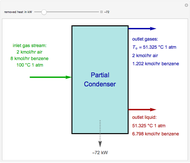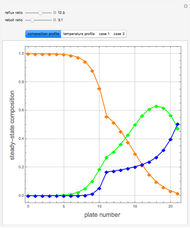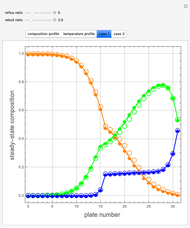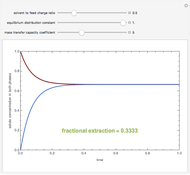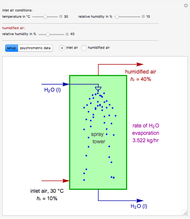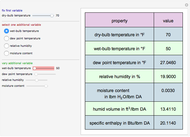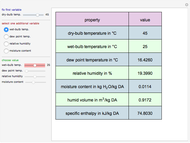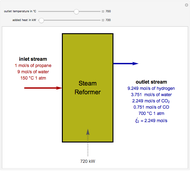Economic Trade-Offs in the Operation of a Single Reactor

Requires a Wolfram Notebook System
Interact on desktop, mobile and cloud with the free Wolfram Player or other Wolfram Language products.
Consider an irreversible first-order reaction (A → products) taking place in a single isothermal CSTR (Continuous Stirred-Tank Reactor). We suppose that the unconverted reactant cannot be recycled. There is thus a trade-off between investment cost and raw material cost. Indeed, there is a low investment cost and high raw material consumption at low conversions for a specified production rate. On the other hand, high conversions require large reactor volumes but low raw material costs. The total annual cost, TAC, is given by the blue curve. This curve is convex, which guarantees that we can find a global minimum for the TAC. This optimum point is represented by a blue dot. The red curve represents the behavior of raw material cost with conversion for a fixed production rate. The behavior of the reactor investment cost as a function of conversion is shown in green. For high conversions, one needs large reactor volumes, which will be expensive. TAC is given by the following expression; the first term and second terms take into account raw material cost and the investment cost:
[more]
Contributed by: Housam Binous and Ahmed Bellagi (March 2011)
Open content licensed under CC BY-NC-SA
Snapshots
Details
J. M. Douglas, Conceptual Design of Chemical Processes, International ed., New York: McGraw–Hill, 1988.
Permanent Citation

















